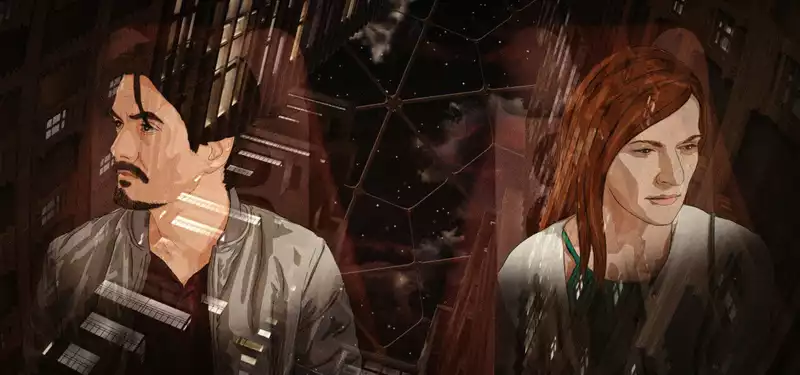Feb 21, 2023
Why the environmental sci-fi film "White Plastic Sky" adopted a hybrid style.
This year's Berlin International Film Festival is packed with animated films. One of the most fascinating is "White Plastic Sky" (M.anyag égbolt), a Hungarian-Slovakian co-production by Tibor Barnocki and Sarolta Chabot.
The film is a science fiction allegory about a world in which all flora and fauna outside a protected bubble have died out. In the utopian biodome, no one is allowed to live beyond the age of 50. As they approach the ripe old age, each person is implanted with a chip that transforms them into a plant that provides fresh oxygen and food for the community.
This process is mandated at age 50, but individuals may volunteer at any age. After experiencing tragedy, young Nora decides to end her life as a human and move on to the next phase of her life as a plant. Her husband, Stefan, who has always been a firm believer in this system, cannot accept his partner's decision and sets out to prevent Nora's transformation.
"White Plastic Sky" features a style that blends hand-drawn rotoscoping with CG animation, creating a futuristic, otherworldly atmosphere while maintaining enough commonality with our reality that we cannot help but empathize with the main characters. The hybrid art style also mimics the hybrid plant-human story well, providing an unforgettable visual treat.
Produced by Hungary's Salto Films and Slovakia's Artichoke, the film will have its world premiere at the Encounters section in Berlin; it is being marketed worldwide by Films Boutique; it will be shown at the Berlin International Film Festival; and it will be shown at the Berlin Film Festival.
On the occasion of the premiere, we spoke with Vernocki and Szabó. They explained their decision to mix animation styles for the film, the difficulties this created, and the special measures they took to ensure the vivid performances of the animated protagonists.
Cartoon Brew: What was the script/storyboarding process like - how long did it take to bring the idea to life -
Tibor Bánóczki and Sarolta Szabó: We started developing the story in 2016. We started working on the story in 2016. We worked together on every aspect of the film and every little thing had to be approved by both of us. Our writing process is that one of us would start writing a scene based on a basic outline. Once the first draft of the scene was complete, we would give it to the other director, who would make corrections and comments. They then go back and forth until they feel they are right. During this process, I often consulted with Rita Domonij, the dramaturg, and we discussed each scene many times. The same process was used for storyboarding, and Judit Czako, the editor, also participated in this process.
What did you refer to for character design and animation? For this film we used rotoscoped animation. I thought this was the best way to represent the animation of the characters, which I wanted to make as realistic as possible. Of course, we have seen many animations using rotoscope animation. Our animators used digital tablets and hand-drew every second or third frame.
In addition to rotoscope, you also used computer graphics. 21]
Bánóczki and Szabó: The use of mixed animation techniques and rotoscope seemed conceptually in line with the theme of the film. The film, which explores different life forms (human and plant), is also a kind of hybrid itself, existing between animation and live action. We used CG animation for the backgrounds, which was very important for creating a believable world, and also because it gave us freedom for cinematic expression, lighting, texturing, and camera movement.
What were the major challenges in using the rotoscoping technique? In order to produce the animation, we needed people with very high drawing skills and knowledge of anatomy. Animating all the scenes and keeping the actors' facial expressions as close as possible was a very difficult and labor-intensive task. The most difficult part was finding a team that could animate and render the scenes at such a high level.
.



Post your comment